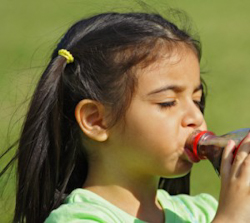
With today’s lifestyles tending to be fairly hectic and busy, it’s hard for many individuals to find the time to complete all of the items, chores, and responsibilities related to being a parent that is present, involved in their children’s daily lives, and still find the time for rest and relaxation.
Included in this is the challenge of routinely preparing healthy and nutritious meals for not only your children, but yourself as well. This can be witnessed by the fact that both childhood and adult obesity has drastically risen over the past 20 years.
There are two primary reasons for this increase in obesity: the lack of regular physical activity and dietary habits that are filled with consistently consuming high calorie processed foods that are high in fat.
This being said, as a concerned parent, you’ve probably given thought to ways in which you can consistently prepare healthier meals and eliminate the various foods and beverages that are nutritionally deficient and calorically prohibitive. One such beverage that you have probably considered is soda pop. After all, soda for kids consists of little more than sugar, artificial flavorings and empty calories, and its caffeine content can make children hyperactive during the day and irritable as bedtime approaches.
If you’ve tried and failed to cut out soda for kids in the past, there’s good news: a new study by Belgian researchers has revealed three proven ways to do it:
-
Stop serving soda with meals
-
Stop giving your kids unrestricted access to soda
-
Stop keeping soda in the house entirely
While the methods are increasingly drastic, they are proven to work, according to the researchers.
Children in Higher-Income Families Drink Far Less Soda
The primary objective of the Belgian soda for kids study was to determine the differences in soda consumption between children in higher-income and lower-income families. After analyzing questionnaires from over 1,600 parents of children between the ages of 2 and 7, the researchers determined that the higher-income children drank about 42% as much soda as the lower-income children.
The researchers said that about 50% of the soda consumption discrepancy could be explained by the practice of not serving soda with meals. Another 33% of the discrepancy was a result of preventing kids from having unrestricted access to soda. The final 17% of the discrepancy was caused by parents never keeping soda at home, according to the researchers.
The study also found that typical methods of curbing soda consumption, such as explaining to children why soda is not very healthy, were ineffective.
The researchers concluded that parents greatly influence their children’s soda consumption through both their parenting practices and their own dietary behaviors. They said that curbing soda consumption among children is important because consuming soda and other sugar-laden beverages increases the risk of diseases such as Type 2 diabetes and obesity.
Limitations of the Study
Kate Dickin, a Cornell University nutritional science researcher, agrees that both the home environment and the home policies established by parents will be most influential on how much soda a child drinks.
However, Dickin said that the study may have been slightly flawed in that it only examined soda consumption to the exclusion of other sugary beverages that are just as unhealthy as carbonated soda. The study was also somewhat limited due to the fact that the researchers relied on reported data from parents rather than their own direct observations.
At the same time, Dickin said it makes sense that keeping soda out of the house entirely is one of the most effective methods, even for parents who implement soda limitations on their children. Even the most rigid parents have a harder time saying “no” when they’re distracted, stressed or tired, according to Dickin.
How Can Parents Make Healthier Choices More Appealing?
According to Dickin, the appropriate strategy for parents isn’t to make soda look bad, but rather to make healthier food choices look good. Taking a healthier beverage and dressing it up with a fancy straw, slice of fruit or special cup can go a long way toward convincing the child to drink it. Using this type of strategy also allows parents to accentuate the positive aspects of healthy eating rather than dwelling on the negative aspects of eating poorly, which are difficult for children to understand.
Curbing Your Child’s Soda Consumption: The Bottom Line
Researchers in Belgium have discovered three proven methods to reduce soda consumption among children – not serving it with meals, restricting physical access, and keeping it out of the house entirely. The researchers also discovered that children from low-income families drink over twice as much soda as children from higher-income families.
The full text of the study can be found in the medical journal Appetite.













